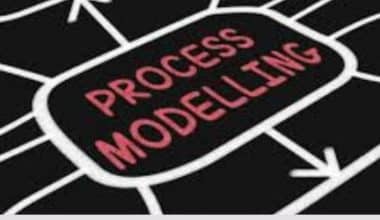You can identify and put into practice growth strategies to increase revenue, broaden your clientele, or develop new products by creating a business growth plan. You can successfully expand your business by understanding what a business growth plan is and the best practices for creating one.
In this article, we go over business growth strategies and provide advice on how to formulate a successful business expansion strategy.
What Is Business Growth?
Business growth is the process of growing a business to make more profits. A company can expand in one or more areas to accomplish this. The following are some typical areas of business growth:
- Product development
- Sales and marketing
- Customer base
- Brand reputation
- Employees
Furthermore, business growth plans are frequently used by companies when making future expansion plans. A comprehensive framework for achieving business growth objectives, a business growth plan contains objectives, strategies, and plans. These plans typically last for a year or two. Additionally, they can aid in the implementation of growth strategies and the assessment of success for business development managers, company executives, and other stakeholders. By evaluating growth metrics, the business can modify its strategy as necessary to achieve the overall objective specified in the growth plan.
What Is Growth Stage Strategy?
A growth strategy is a strategy used by businesses to increase one aspect of their operations, such as annual revenue, customer base, or product line. The addition of new business locations, spending on customer acquisition, or growing a product line are examples of specific growth strategies.
Note that when consumers have accepted the product on the market and are starting to genuinely buy in during the growth stage, that indicates that both demand and profits are rising, hopefully steadily and quickly. The market for the product is expanding during the growth stage, and competition is starting to emerge.
Who Needs A Growth Strategy?
No matter the size or industry, every business needs a growth strategy. Without a sound expansion strategy, businesses run the risk of stagnation or decline. A growth strategy aids businesses of all sizes in concentrating on their objectives, target markets, and long-term expansion. Additionally, it’s especially important for businesses dealing with market competition, financial difficulties, or shifting consumer demands. In summary, a growth strategy is essential for any company that wants to flourish and be successful in the long run.
What Are Growth Strategies For An Organization?
A growth strategy is a plan to expand an organization in a specific aspect, such as revenue, customers, or products. It can include adding new locations, investing in customer acquisition, or expanding a product line. Organizations in expanding industries must grow to survive, while established companies need to grow to increase sales and take advantage of opportunities.
A growth strategy is regarded as a desirable business strategy for the following reasons:
- Many businesses only see business growth as a result of industry growth. A company’s weaknesses may be momentarily concealed by the resulting rise in demand, but they will soon be exposed once the market begins to fall.
- Furthermore, growing businesses offer more executive job security as well as chances for employee growth, promotion, and innovation.
What Are The Two Types Of Growth Strategies?
#1. Concentration Strategies:
Concentration strategies are employed when a product or service line has a strong chance of expanding. In a developing market, these tactics are typically pursued before diversification. Vertical growth strategies and horizontal growth strategies are two different types of concentration strategies.
When a business uses a vertical growth strategy, it takes over a role that had previously been performed by a supplier. By exercising more control over their product or service, the organization expands. Expanding operations internally or making acquisitions externally are two ways to achieve this growth. Note that for businesses that are well-positioned to compete in a thriving market, vertical growth is an effective strategy. They can strengthen their position in the market by moving up the value chain.
In contrast, companies that adopt a horizontal growth strategy increase the size of their target market by entering new markets with their goods or services. Organizations can expand horizontally by developing internally or externally by acquiring or forming strategic alliances with companies in the same sector. The purchase of Whatsapp by Facebook is an illustration of horizontal growth in action. Facebook was able to grow its overall market share by acquiring a social media platform with advantages in various markets.
#2. Diversification Strategies
Diversification strategies are most frequently employed by mature organizations that have reached the maximum amount of growth that can be achieved through vertical and horizontal strategies. Concentric and conglomerate diversification are the two categories of diversification strategies.
Concentric diversification is a marketing tactic that emphasizes the qualities that have given the company a competitive edge. Companies that pursue concentric diversification look for a strategic fit in a new sector where they have deep expertise or development resources. When a company is in a strong competitive position but the industry is not particularly attractive, this tactic may work well. An example is a drug-producing company expanding its product line to include surgical services.
In contrast, companies that opt for conglomerate diversification instead increase their presence in a sector unrelated to their current one. This approach is more suitable for businesses that lack the competencies or know-how required to enter a related industry.
What Are Ansoff’s 4 Growth Strategies?
The four categories of growth strategies identified by the Ansoff Matrix are as follows:
#1. Product Development Strategy:
In this strategy, companies create new products to expand their market share.
#2. Market Development Strategy:
Businesses can employ this technique to increase the number of users, create new clientele, or break into untapped markets.
#3. Market Penetration Strategy:
Businesses in this situation break into markets using a variety of marketing strategies, such as offering discounts, lowering prices, bundling products, etc. They make an effort to expand their market share in the current market.
#4. Diversification Strategy:
The riskiest tactic, as in this case, is when businesses launch novel new products or enter a new market. Despite being the riskiest, if properly executed, it can also provide organizations with enormous benefits.
Steps for Business Growth Strategy
#1. Choose an Area to Target Growth
Whether it be entering a new market, launching a product in an existing market, implementing a merger or acquisition, increasing sales, etc., an organization must focus on a specific area for growth and strategy. Every area has a distinct strategy and calls for a different level of effort and expertise. A target area should be chosen by businesses based on the region’s resources, labor pool, and economic climate.
#2. Carryout Research
The company conducts market research to gather information before establishing the goal and formulating the plan of action. Surveys, interviews with business leaders, idea-sharing sessions with subject-matter experts, and public opinion are just a few of the methods that can be used for market research.
#3. Set Goals
The company established its objective after conducting the research and gathering the data. Strong objectives include things like increasing sales or introducing new products. Goals give the organization a clear direction, aid in the creation of plans, and inspire employees. Additionally, the objective must be consistent with the organization’s strategic objectives and long-term planning.
#4. Develop Your Plan
This is the stage where your company presents a thorough plan for its business growth strategy. This strategy outlines the precise steps required to achieve growth within the specified time frame. As part of this strategy, tasks will be divided, roles will be assigned, and resources will be provided.
#5. Execute the Plan
This action is crucial. Here, your company puts the plan into action and completes the tasks listed in the business growth plan.
#6. Gather Feedback & Modify Strategies
Feedback gathering is essential. Businesses use feedback to assess the efficacy of their strategy. If the strategy is failing, it provides useful information to help your business modify its plan and change its strategy in order to account for market realities. This action will support businesses in achieving their goals and strengthen their growth strategy.
What are key growth strategies?
Let’s delve deeper into each of the three categories of strategy that are essential to a company’s success.
#1. Business Strategy: Customer Experience
The first of the three different kinds of strategies is called a business strategy, and it focuses on how your customers will perceive your company. It asks questions like “Where do we play?” and “How do we win?” and is mainly focused on how a business will approach the market.
“Where do we play?” covers questions like:
- Which customers should we target?
- Which locations should we cover?
- What products and services should we provide?
“How do we win?” covers questions like:
- How do we compete against our competitors?
- What tools should we employ to differentiate us from the competition?
- In what ways can we create new markets?
Senior managers create the business strategy, which is then clarified by business architects. Executives are beginning to bring advanced business architecture practices and purpose-driven CX design into the strategy discussions to provide tools, models, and facilitation.
#2. Operational Strategy: People and Process
Operational strategy, which focuses on your people and processes, is the second of the three different types of strategy. Its main goal is to successfully translate the customer-centric business strategy into a comprehensive implementation plan that can be put into practice.
Operational strategy answers questions like:
- Which capabilities require development or improvement?
- Which procedures require a complete overhaul or improvement?
- Do we have the necessary personnel, and do they possess the required expertise?
Furthermore, business architects are currently working in the operational strategy domain, communicating with leadership for direction. They work from the middle out to bring clarity to the organization. Lastly, leadership and business architects should actively develop the skills needed to move into other strategy domains.
#3. Transformational Strategy: Platform Technology
The third type of strategy is transformational, which focuses on how technology can help your organization change. We’re not talking about automation here; rather, we’re talking about a genuine shift to a digital business model. Since it signifies the complete transformation of a company or organization, it is less frequently seen. This kind of strategy requires radical and extremely disruptive changes in people, processes, and technology, going above and beyond typical business strategies.
Additionally, the Project Management Office (PMO), organizational development, and consultants typically handle transformational strategy. Few organizations choose to take this route voluntarily and with realistic expectations of the resources required.
What Are The Three Main Methods Of Growth?
Market development, market penetration, and product development are sometimes referred to as “intensive strategies” because they demand significant resources if a company wants to strengthen its position against rivals’ products.
How Many Types Of Growth Strategies Are There?
As for organic growth strategies, there are four main categories: market penetration, product development, market development, and diversification.
Which of the four growth strategies is the easiest to implement?
Market penetration is the easiest and least risky growth strategy to employ. It entails increasing your product’s sales in your current market.
DISTRIBUTION STRATEGY: Types, Benefits, and How To Implement Them
SALES ENABLEMENT: Meaning, Examples, Top Tools & Strategy
Human Resources: Definition, Department, Salary, Strategy, & Outsourcing
REFERENCE FOR JOB: Definition, How To Get It, Example & Types






![[Business Guide] How To Start A Used Car Dealership In Missouri?](https://businessyield.com/wp-content/uploads/2022/03/unnamed-380x220.png)